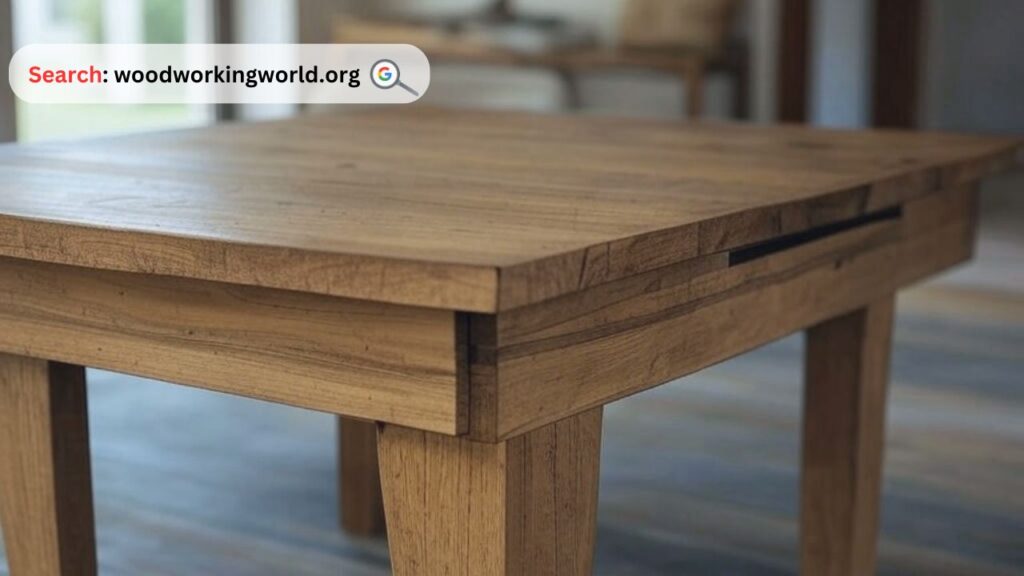Bring warmth home with a natural wood table! Discover styles, benefits, and tips to choose the perfect wooden table for your space.
A natural wood table is more than just a piece of furniture; it’s a statement of warmth, comfort, and durability. Whether it’s a rustic farmhouse dining table or a sleek modern coffee table, wood brings a timeless charm to any home. The organic texture, rich grains, and inherent durability make it a preferred choice for homeowners seeking both function and aesthetic appeal.

In this comprehensive guide, we will explore the benefits of natural wood tables, the step-by-step process of choosing and maintaining one, a comparison of different wood types, and answer frequently asked questions to help you make an informed decision.
Why Choose a Natural Wood Table?
A natural wood table offers numerous benefits:
- Timeless Elegance: Wood never goes out of style and blends seamlessly with different interior themes.
- Durability: Properly maintained wood tables can last for generations.
- Sustainability: Sourced from responsibly managed forests, wood tables are an eco-friendly choice.
- Customization: With various wood species, stains, and finishes, you can tailor a table to fit your décor.
- Health Benefits: Unlike synthetic materials, natural wood doesn’t emit harmful chemicals into your home environment.
Build 16,000+ Projects with Step-by-Step Plans—No Big Workshop or Costly Tools Needed! Start Now!
Step-by-Step Guide to Choosing the Perfect Wood Table
1. Determine Your Needs
Consider the function of the table:
- Dining table: Should be large enough to accommodate your family and guests.
- Coffee table: Should complement your seating arrangement.
- Side table: Should provide convenience near sofas or beds.
- Work desk: Should offer ample workspace and ergonomic design.
2. Choose the Right Wood Type
Different wood types have distinct characteristics. Below is a comparison table of common choices:
| Wood Type | Durability | Grain Pattern | Color Variations | Best For |
|---|---|---|---|---|
| Oak | High | Prominent | Light to dark brown | Dining, work desks |
| Walnut | High | Smooth | Dark brown | Luxury tables, offices |
| Maple | Medium | Subtle | Light beige | Kitchen, workspaces |
| Cherry | Medium | Wavy | Reddish-brown | Classic interiors |
| Pine | Low | Knots present | Light yellowish | Budget-friendly, rustic decor |
3. Select the Finish
The right finish enhances durability and aesthetics. Some popular options include:
- Oil Finish: Enhances natural color and is easy to maintain.
- Polyurethane Finish: Offers a protective layer against spills and scratches.
- Wax Finish: Provides a soft, vintage look but requires regular reapplication.
4. Consider Table Size and Shape
- Rectangular tables: Ideal for larger dining spaces.
- Round tables: Great for intimate settings and small spaces.
- Square tables: Work well in compact dining areas.
5. Maintenance and Care
To keep your natural wood table in pristine condition:
- Use coasters and placemats to prevent water rings.
- Clean with a damp cloth and avoid harsh chemicals.
- Apply wood conditioner or oil periodically.
- Keep away from direct sunlight to prevent fading.
Expert tips on Woodworking 🌿📦 Watch now!

Bringing Natural Warmth: Design Inspirations
A well-chosen wood table enhances the ambiance of your home. Here are some ideas:
- Rustic Farmhouse: Use reclaimed wood for a vintage appeal.
- Minimalist Modern: Opt for a sleek walnut table with metal legs.
- Scandinavian Style: Choose a light oak table with soft, rounded edges.
- Industrial Loft: Combine a thick wood slab with iron legs for an urban look.
“Woodworking requires a completely different way of thinking. You have to think in terms of wood and the way it interacts with the environment.” – James Krenov
Frequently Asked Questions (FAQs)
Q1: How do I protect my wood table from scratches?
A: Use felt pads under objects, avoid dragging items across the surface, and apply protective finishes like polyurethane.
Q2: Can I use a wood table outdoors?
A: Only if it’s treated with weather-resistant finishes. Teak and cedar are the best choices for outdoor use.
Q3: What is the best way to remove water stains?
A: Gently rub a mixture of baking soda and water over the stain or use a wood polish.
Q4: How often should I refinish my wood table?
A: Depending on use, refinishing every 2–3 years helps maintain its beauty and durability.
Q5: Are natural wood tables expensive?
A: The price varies based on wood type and craftsmanship. Hardwood tables like walnut and oak tend to be pricier than softwood options like pine.

Conclusion
A natural wood table is an investment in style, functionality, and warmth. Whether you are drawn to the elegance of walnut, the durability of oak, or the affordability of pine, there’s a perfect wood table for every home. By following the steps outlined in this guide, you can select, maintain, and enjoy a stunning natural wood table for years to come.
Embrace the beauty of nature in your home today—bring warmth with a natural wood table!
Click To Order Teds Woodworking With A 60-Money-back Guarantee From – Official Website